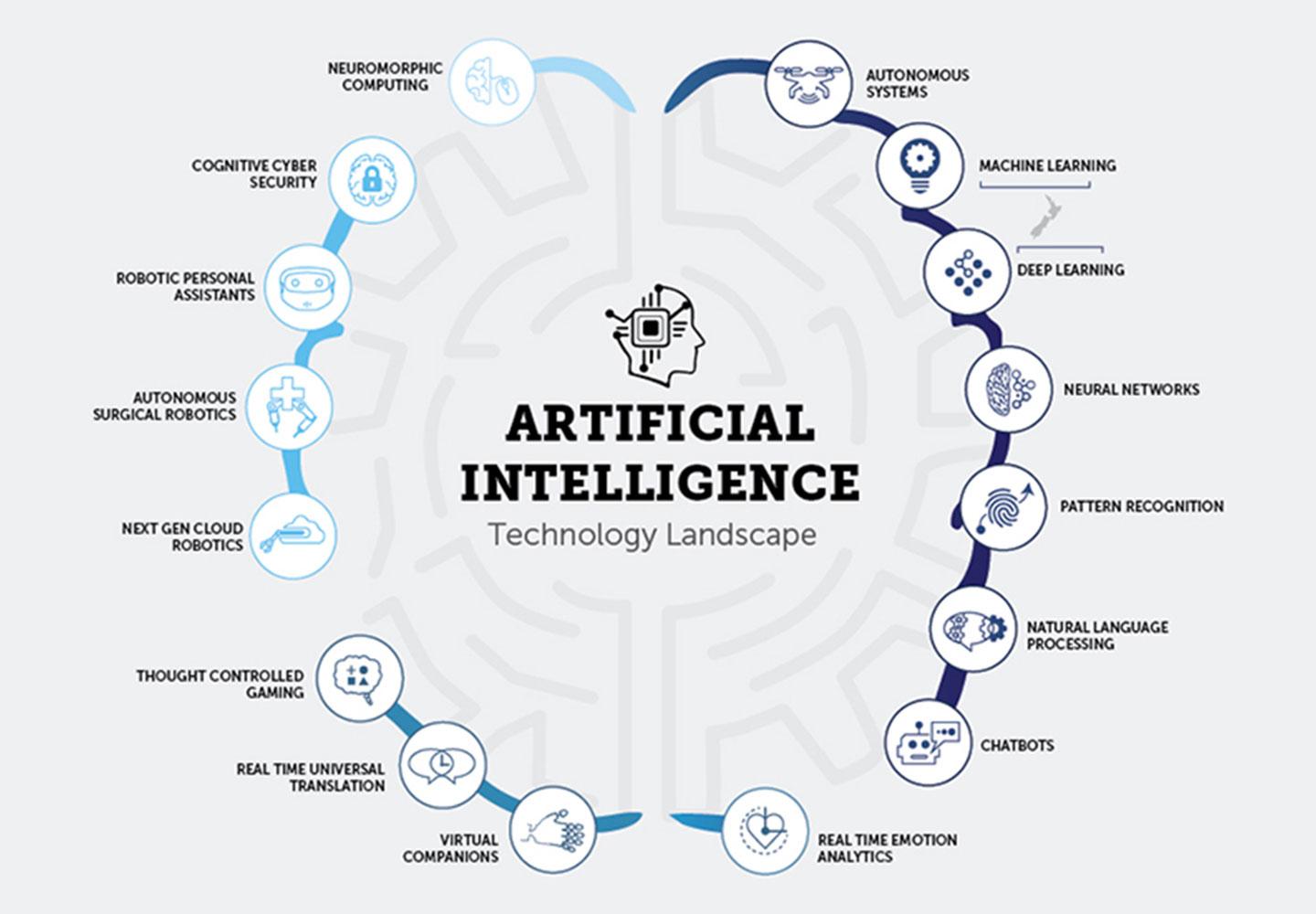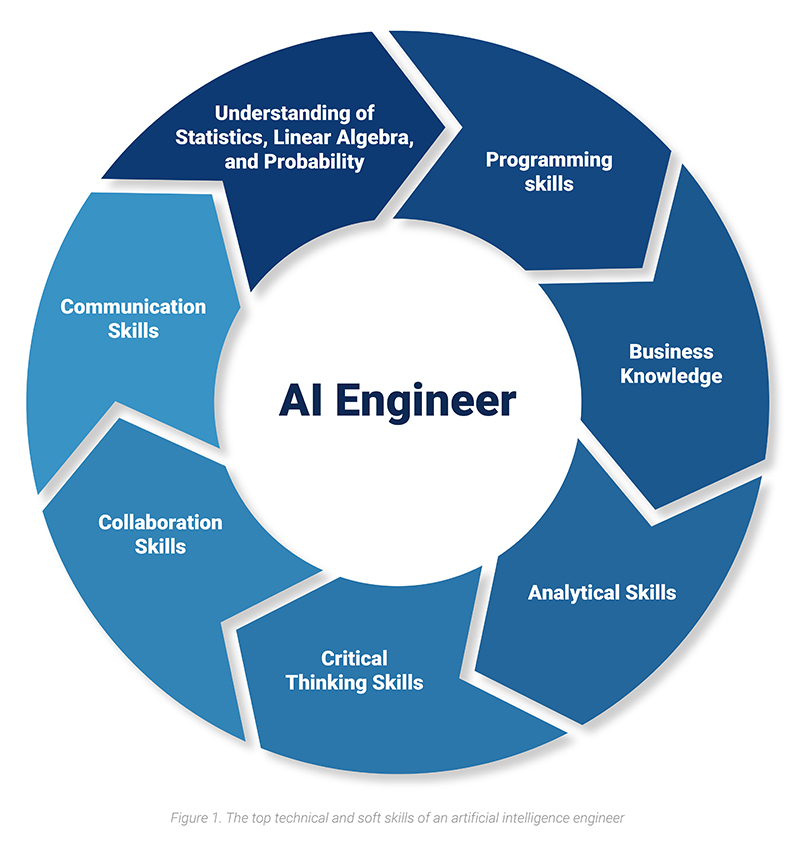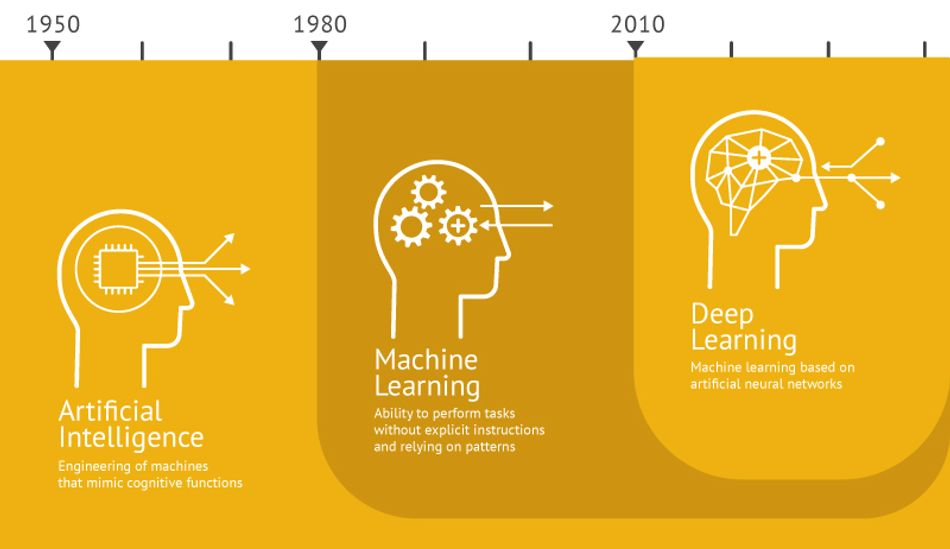Artificial Intelligence (AI) and Machine Learning (ML) are two terms often used interchangeably, but they represent distinct concepts within the realm of technology. Understanding the difference between AI and ML is essential to grasp their applications and potential. AI refers to the simulation of human intelligence in machines, enabling them to perform tasks that typically require human cognition.
On the other hand, ML focuses on developing algorithms and models that will allow computers to learn from data and make predictions or decisions without explicit programming. This article explores the dissimilarities between AI and ML, exploring their unique characteristics, benefits, and technical skills required for these fields.
By the end, you’ll understand how AI and ML differ and complement each other in the technological landscape. So, let’s dive in!
How Does Artificial Intelligence Work?
Artificial Intelligence (AI) encompasses the development of intelligent machines that can perform tasks autonomously, imitate human cognition, and exhibit learning capabilities. AI systems rely on algorithms, data, and computing power to analyze and interpret information, make decisions, and solve problems.
Explore: How Much Does AI Cost To Develop?
AI Overview:
AI involves the creation of intelligent systems that can perceive their environment, reason, learn, and interact with humans. These systems leverage techniques like natural language processing, computer vision, and machine learning to mimic human intelligence and perform tasks that traditionally require human intervention.
Benefits of AI:
- Increased Efficiency: AI automates repetitive tasks, reducing the time and effort required for manual execution. It streamlines processes, leading to improved productivity and cost-effectiveness.
- Improved Accuracy: AI systems can process and analyze vast amounts of data with precision and consistency, minimizing errors and enhancing decision-making.
- Advanced Problem Solving: AI algorithms can tackle complex problems by identifying patterns, extracting insights, and generating innovative solutions that might be challenging for humans to achieve.
Read in-detail: Uses Of Artificial Intelligence For Marketing Analytics

Types of AI:
- Narrow AI: Also known as Weak AI, it focuses on specific tasks and operates within a limited domain. Narrow AI systems excel at performing specific functions such as voice recognition, recommendation systems, or image classification.
- General AI: Often referred to as Strong AI, it aims to possess human-level intelligence across various tasks. General AI systems can understand, learn, and apply knowledge to solve problems in multiple domains.
- Super Intelligence: This represents AI systems that surpass human intelligence in virtually every aspect. Superintelligence is a hypothetical phenomenon concept that poses both exciting possibilities and potential risks.
How Does Machine Learning Work?
Machine Learning (ML) is a subset of Artificial Intelligence (AI) that enables computers to learn from data and make predictions or decisions without explicit programming. It works by collecting relevant data, preprocessing it to handle formatting issues and outliers, and then training models using labeled data to establish patterns. The trained models are evaluated and deployed for real-world applications, and they can continuously learn and improve by retraining with new data. ML allows computers to analyze and identify patterns in data, enabling them to make accurate predictions or decisions in various domains.
Definition of Machine Learning
Machine Learning involves using algorithms and statistical models to enable computers to learn from data and make predictions or take actions. It relies on the principle that machines can automatically understand and improve from experience without being explicitly programmed for specific tasks.
Benefits of Machine Learning
- Automatic Adaptation: ML systems can adapt and improve performance based on new data and experiences. They can learn from mistakes, refine their models, and enhance accuracy and efficiency.
- Discovering Hidden Patterns: ML algorithms excel at identifying complex patterns and relationships in large datasets that may not be apparent to humans. This ability enables the discovery of valuable insights and actionable information.
- Predictive Capabilities: ML models can make accurate predictions and forecasts based on historical data. This has applications in various domains, including sales forecasting, demand prediction, and risk assessment.
Types of Machine Learning
- Supervised Learning: In this type of ML, the algorithm learns from labeled examples provided in the training dataset. It aims to map input data to the correct output based on a given set of labeled examples. Supervised learning is commonly used for tasks like classification and regression.
- Unsupervised Learning: Unlike supervised learning, unsupervised learning algorithms work with unlabeled data. The goal is to find patterns, structures, or relationships in the data without explicit guidance. Clustering and dimensionality reduction are examples of unsupervised learning techniques.
- Reinforcement Learning: Reinforcement Learning involves an agent interacting with an environment and learning to make decisions based on rewards or punishments received. The algorithm learns by trial and error, optimizing its actions to maximize cumulative rewards. This type of learning is often used in robotics, game-playing, and autonomous systems.
Technical Skills Required for AI-ML Roles
To excel in AI and ML roles, professionals need a combination of technical skills and knowledge. Here are some essential skills required for AI-ML roles:

- Knowledge of programming languages like Python, C++, and Java: Proficiency in programming languages is crucial for implementing AI and ML algorithms and frameworks. Python is popular due to its simplicity, vast libraries, and strong community support. C++ and Java are also used in specific AI-ML applications that require high performance or integration with existing systems.
- Data modeling and evaluation: Understanding how to structure and evaluate data sets is essential for training and optimizing ML models. This involves preprocessing, feature engineering, and selecting appropriate evaluation metrics to assess the models’ performance accurately.
- Probability and statistics: A solid foundation in probability theory and statistical analysis is necessary to work with AI-ML algorithms effectively. It helps in understanding the principles behind various ML techniques, evaluating model performance, and dealing with uncertainty in data.
- Distributed computing: Proficiency in distributed computing is valuable when dealing with large-scale datasets and computationally intensive AI-ML tasks. Knowledge of frameworks like Apache Hadoop or Apache Spark allows efficient processing and analysis of big data across distributed systems.
- Machine Learning algorithms: Comprehensive knowledge of ML algorithms is fundamental for designing practical models and understanding their strengths and limitations. This includes algorithms such as decision trees, support vector machines, neural networks, k-means, and hierarchical clustering techniques.
Difference between Artificial Intelligence and Machine Learning
To better understand the distinctions between Artificial Intelligence (AI) and Machine Learning (ML), let’s compare them in a table:
|
Artificial Intelligence (AI) |
Machine Learning (ML) |
| AI enables machines to simulate human behavior and intelligence. | ML allows machines to learn from data without explicit programming. |
| The goal of AI is to create intelligent systems that can solve complex problems. | The goal of ML is to enable machines to learn from data and provide accurate outputs. |
| AI systems can perform various tasks like humans. | ML focuses on training machines for specific tasks based on data. |
| AI includes subsets such as machine learning and deep learning. | ML is a subset of AI and includes techniques like supervised, unsupervised, and reinforcement learning. |
| AI has a wide range of applications and capabilities. | ML has a more limited scope and is focused on specific tasks and patterns. |
| Examples of AI applications include virtual assistants, expert systems, and intelligent robots. | ML is used for recommender systems, search algorithms, and data analysis. |
| AI deals with structured, semi-structured, and unstructured data. | ML primarily focuses on structured and semi-structured data. |
| AI involves learning, reasoning, and self-correction. | ML involves learning and s |
Explore: Impressive Ways To Use AI In Customer Services
Comparing Skills Needed: Artificial Intelligence vs Machine Learning
While Artificial Intelligence (AI) and Machine Learning (ML) are closely related fields, they require slightly different sets of skills for professionals to excel. AI roles often demand a broader understanding of AI techniques, natural language processing, and knowledge representation. Professionals working in AI must have a deep understanding of problem-solving, reasoning, and decision-making, along with expertise in various AI technologies and frameworks. Strong programming skills, particularly in Python, C++, and Java, are crucial for implementing AI algorithms and models.
On the other hand, ML roles require a strong foundation in statistics, probability theory, and data modeling. Proficiency in ML algorithms and supervised, unsupervised, and reinforcement learning techniques is essential. Professionals in ML should be adept at preprocessing and feature engineering, as well as model evaluation and selection. Moreover, expertise in programming languages like Python is highly valuable for implementing ML algorithms and frameworks, as well as data manipulation and analysis.
AI and ML roles often demand data handling and manipulation proficiency, as working with large datasets is common in both fields. Both AI and ML professionals need strong analytical and problem-solving skills and critical thinking abilities to extract meaningful insights from data and develop innovative solutions. It is worth noting that while AI and ML require different skill sets, there is an overlap between the two. Many ML techniques and algorithms are employed within AI systems, and understanding ML is often a crucial component of AI expertise. Therefore, professionals with AI and ML skills can navigate both fields effectively and contribute to developing and deploying intelligent systems.
Read: How Artificial Intelligence Is Revolutionizing The Aeronautics Industry?
Comparing Jobs: Artificial Intelligence vs Machine Learning
Artificial Intelligence (AI) and Machine Learning (ML) have distinct yet interconnected job roles within the realm of technology. AI jobs often involve developing intelligent systems, natural language processing, computer vision, and expert systems. AI professionals work on creating advanced algorithms, designing intelligent user interfaces, and solving complex problems that require human-like intelligence. These roles can include positions such as AI researchers, AI engineers, or AI consultants.
On the other hand, ML jobs are centered around training machines to learn from data and make accurate predictions or decisions. ML professionals focus on developing and optimizing ML models, working with large datasets, and applying various ML algorithms to solve specific tasks. ML job titles may include Machine Learning Engineer, Data Scientist, or ML Researcher. These professionals possess a strong understanding of statistical modeling, data preprocessing, and model evaluation.
While AI and ML job roles have overlapping skill requirements, they do have their specific emphases. AI jobs often require a broader understanding of AI techniques, knowledge representation, and reasoning abilities. ML roles, on the other hand, prioritize expertise in statistical modeling, ML algorithms, and data manipulation. AI and ML professionals must be proficient in programming languages like Python, widely used in both fields.
Furthermore, AI and ML professionals work in various industries, such as healthcare, finance, e-commerce, and automation. They contribute to developing intelligent systems, recommendation engines, predictive analytics, and data-driven decision-making processes.
Summing Up: Key Takeaways on Artificial Intelligence vs. Machine Learning
Artificial Intelligence and Machine Learning are powerful tools that have the potential to transform the way we live and work. The combination of AI’s ability to simulate human intelligence and ML’s capacity to learn from data creates a synergy that propels technological innovation. By embracing these fields and leveraging their unique capabilities, we can unlock new possibilities, solve complex problems, and pave the way for a more intelligent and data-driven future.
If you’re seeking to solve complex problems and leverage the capabilities of Artificial Intelligence (AI) and Machine Learning (ML), we are here to assist you. Our team specializes in developing cutting-edge applications that harness the potential of AI and ML technologies. Contact us now!





